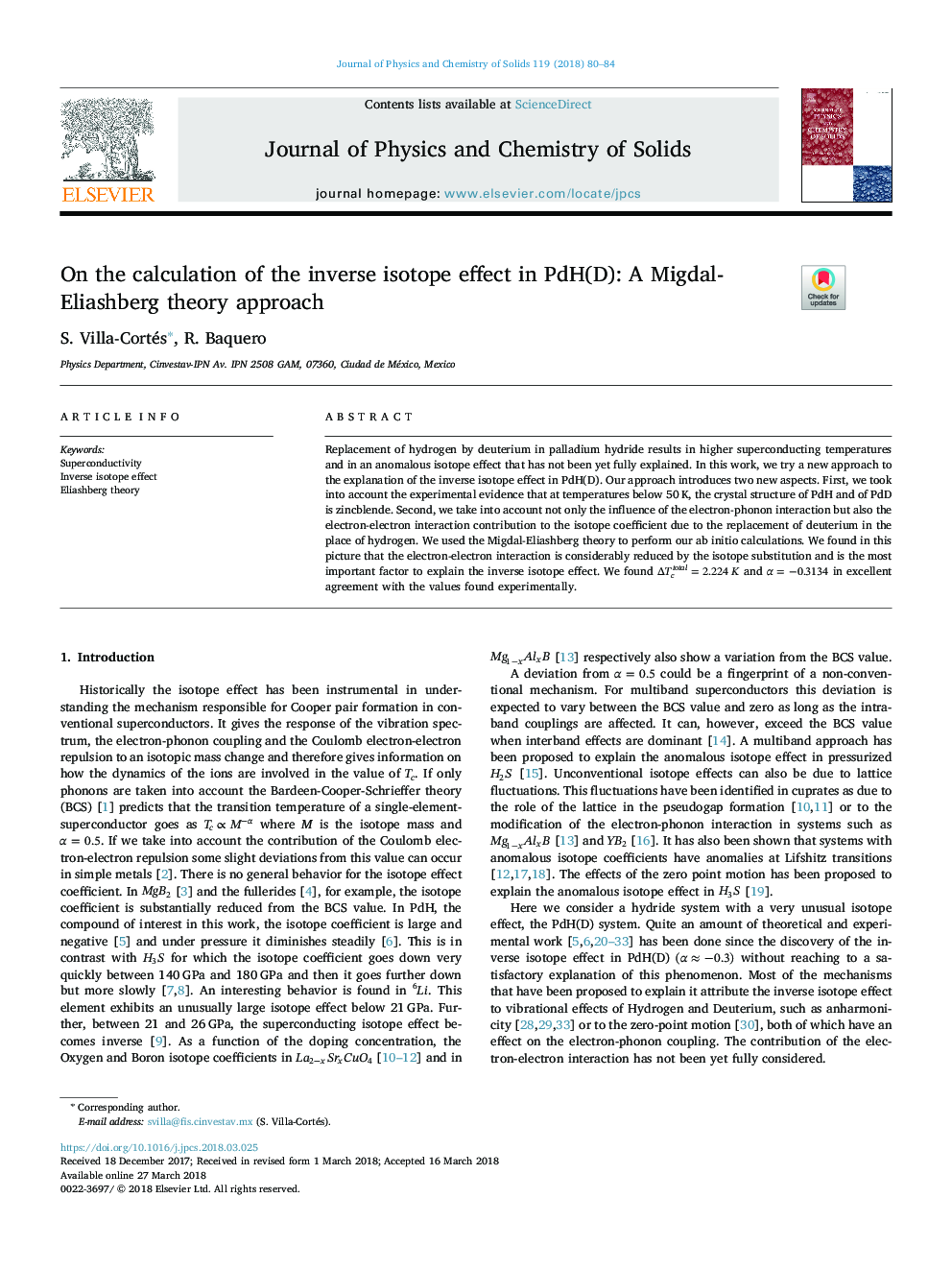| Article ID | Journal | Published Year | Pages | File Type |
|---|---|---|---|---|
| 7920076 | Journal of Physics and Chemistry of Solids | 2018 | 5 Pages |
Abstract
Replacement of hydrogen by deuterium in palladium hydride results in higher superconducting temperatures and in an anomalous isotope effect that has not been yet fully explained. In this work, we try a new approach to the explanation of the inverse isotope effect in PdH(D). Our approach introduces two new aspects. First, we took into account the experimental evidence that at temperatures below 50â¯K, the crystal structure of PdH and of PdD is zincblende. Second, we take into account not only the influence of the electron-phonon interaction but also the electron-electron interaction contribution to the isotope coefficient due to the replacement of deuterium in the place of hydrogen. We used the Migdal-Eliashberg theory to perform our ab initio calculations. We found in this picture that the electron-electron interaction is considerably reduced by the isotope substitution and is the most important factor to explain the inverse isotope effect. We found ÎTctotal=2.224K and α=â0.3134 in excellent agreement with the values found experimentally.
Keywords
Related Topics
Physical Sciences and Engineering
Materials Science
Electronic, Optical and Magnetic Materials
Authors
S. Villa-Cortés, R. Baquero,
